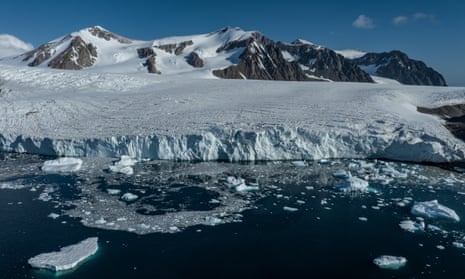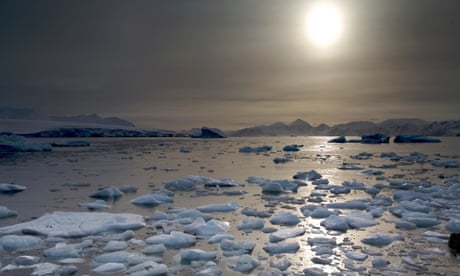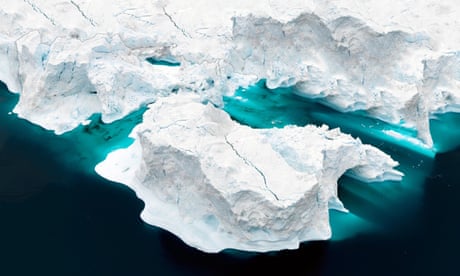Extract from The Guardian

Melting ice in Antarctica. There is increasing evidence that longer-term transformations linked to the climate crisis have started sooner than assumed.
Exclusive: Prof Matt King says accelerated melting could transform country and affect viability of some agricultural industries.
Mon 22 Jan 2024 01.00 AEDT
Last modified on Mon 22 Jan 2024 07.39 AEDTThe head of the Australian Centre for Excellence in Antarctic Science, Prof Matt King, said he found it embarrassing how little was known about the local and global ramifications of changes including a historic drop in floating sea ice cover, the accelerating melting of giant ice sheets and the slowing of a deep ocean current known as the Southern Ocean overturning circulation.
King said they were likely to affect temperature and rainfall patterns across Australia in different ways – changes that could transform communities and affect the viability of some agricultural industries – and hasten sea level rise along the coast.
He said Australia dedicated only tens of millions of dollars a year to work on the continent and much of that went to building and maintaining ships and stations, not research. An Antarctic cargo ship can cost more than $40m.
King said the allocation of funding was small in the context of the $680bn federal budget and did not reflect the continent’s importance.
“We need a champion in cabinet who can drive forward a multi-decadal agenda in the Antarctic,” King said. “Perhaps one of the weaknesses is that Antarctica is seen as an environmental problem, but it is an all-of-government problem.”
He added: “The Australian economy, and the global economy, is set up on Antarctica being as it has been. We’re moving to a phase where Antarctica won’t be like that any more.”
The changes in the Antarctic region have raised serious concerns about its immediate health and coincided with evidence that longer-term transformations linked to the climate crisis have started sooner than had been assumed was likely.
Sea ice cover in the ocean surrounding the continent crashed for six months straight to a level far below anything on the satellite record. One example of its impact: a peer-reviewed paper found an earlier decline in 2022 was likely to have caused a “catastrophic breeding failure” that killed thousands of emperor penguin chicks.
Separate papers found the Southern Ocean overturning circulation had slowed by about 30% since the 1990s and could drop off much further by mid-century due to meltwater from the continent’s ice sheets if greenhouse gas emissions were not significantly reduced. Scientists said this could generate a cascade of impacts to push up sea levels, alter weather patterns and starve marine life of a vital source of nutrients. Past changes in ocean circulations have happened over more than 1,000 years. The paper said in this case it could happen within decades, with relatively abrupt consequences for lives and livelihoods.
Other research last year suggested accelerated melting of ice shelves extended over the Amundsen Sea in west Antarctica was locked in and beyond human control for the rest of this century, even if emissions were significantly reduced.
King said scientists studying these changes and their consequences were relying on scientific models that were incomplete for parts of west Antarctica “and even more so for the rest of the continent”.
“There is so much we don’t know … We don’t know the shape of the bedrock under the ice that governs how the ice retreats and what impact the retreat has,” he said. “We have almost no data on the continental shelf.”
How little is known about the Southern Ocean seabed was illustrated last week when the Australian Antarctic Division announced expeditioners on a resupply voyage had mapped a 2km deep, 46km long canyon extending from the Adams glacier near Casey station when wild weather had forced a delay in unloading goods.
Ben Galton-Fenzi, a glaciologist with the Australian Antarctic Division, said the discovery was noteworthy but there were more important seabed areas scientists could have studied if there was support for a dedicated research trip.
King said while Australia now had access to the RSV Nuyina, an ice-breaking research and supply ship, the country would need multiple icebreakers or autonomous robotic ships if it were to undertake the long-term research needed.
He said a research trip to the marginal ice zone, the transitional area between open sea and floating ice, had been cancelled when the Nuyina was not ready on time and was yet to be rescheduled.
King said there was some evidence of the impact of sea ice loss on Australian weather patterns – one study suggested it could have a drying effect in New South Wales and be linked to increased rainfall in northern Western Australia. But scientists could not yet say what the changes would mean for rainfall patterns over the next decade.
He said the impact of melting glaciers and a potential decline in the amount of carbon dioxide absorbed by the Southern Ocean also posed substantial risks that were not receiving the attention they needed. Research led by King found Antarctic glaciers have been losing on average about 150bn tonnes of ice a year – about 17m tonnes an hour – over the past two decades.
There is a similar issue in the northern hemisphere. Research published last week found the Greenland ice cap was losing an average of 30m tonnes of ice a hour, 20% more than previously thought.


No comments:
Post a Comment